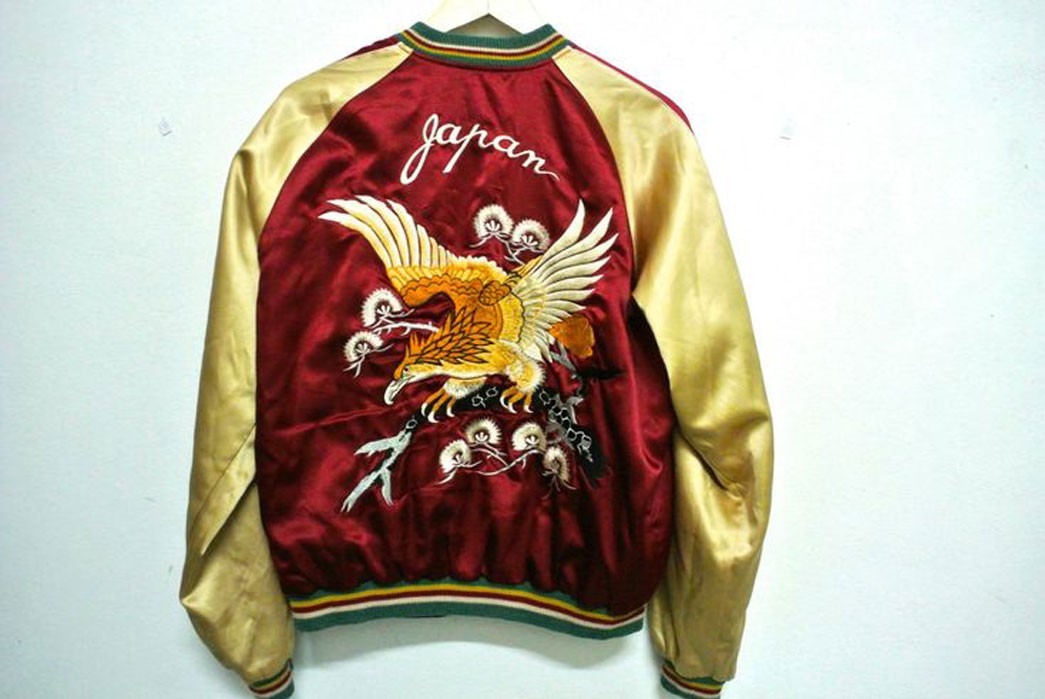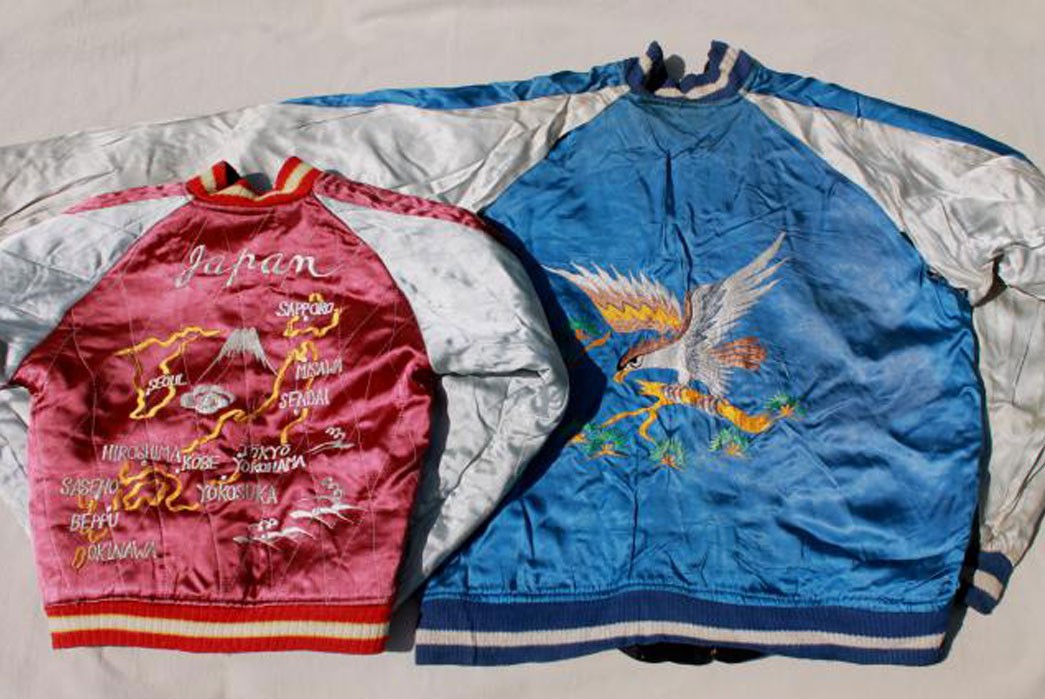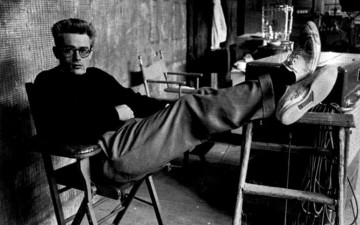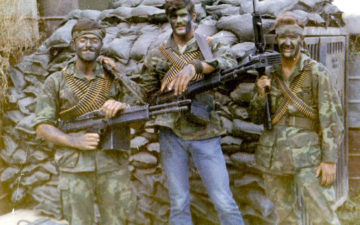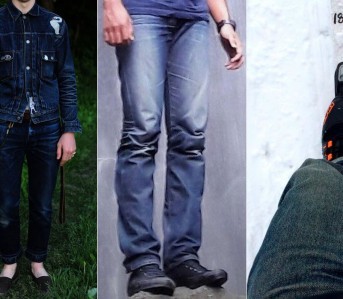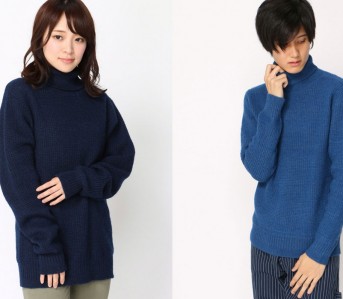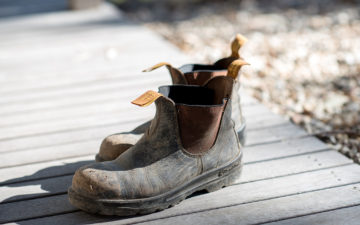By and large, the satin jacket has never had a very good rep. When you think of a guy in one (and I’m being gender specific here), the smarmy type immediately comes to mind, shifty guys who may have an armful of watches to sell you, or perhaps work in the record industry.
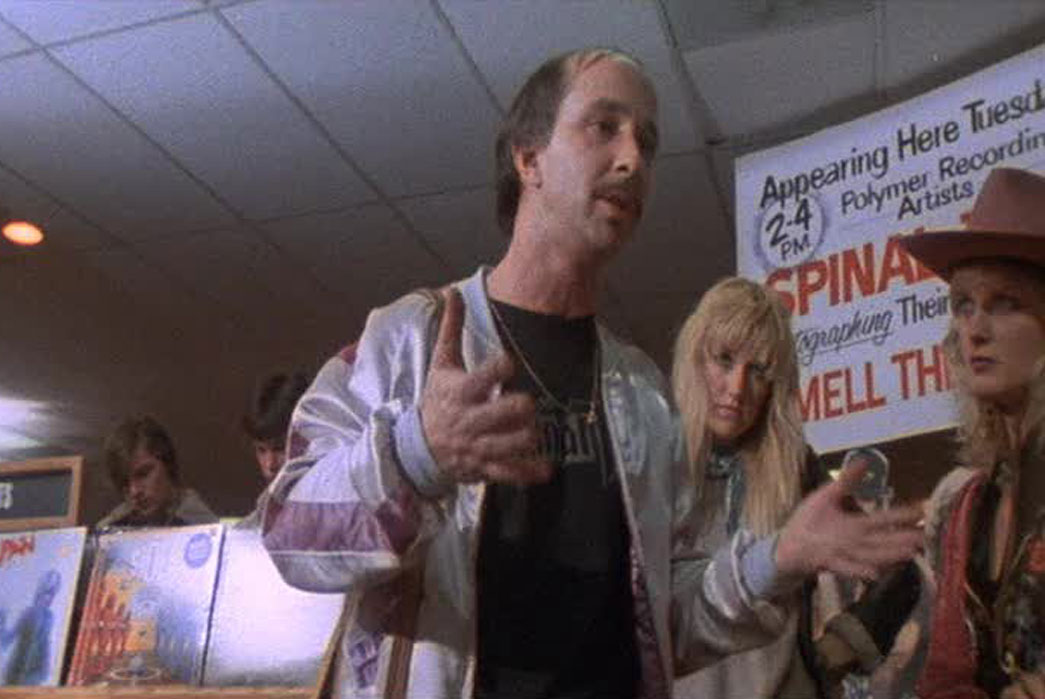
That is, when there was such a thing as the record industry. Paul Schaefer played this character to a tee as Artie Fufkin in, This Is Spinal Tap.
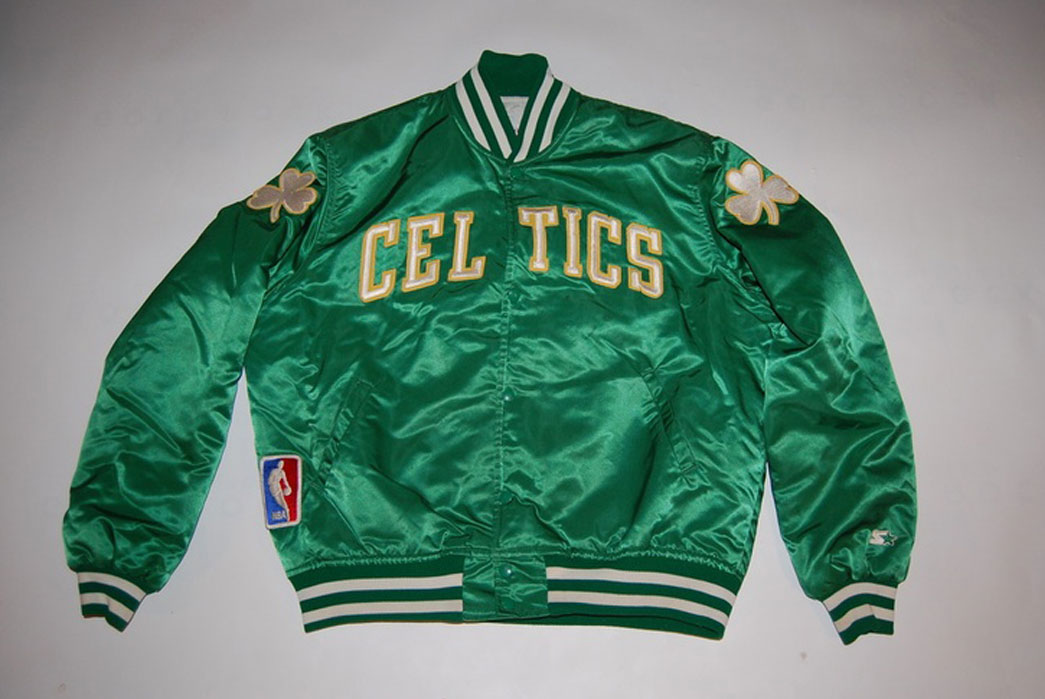
Then there is the vintage jock staple of the Starter jacket. Admittedly, I always wanted a Celtics one, but having never seen a Celtics game, I thought better of it. More recently, there was the quilted ivory scorpion number that Ryan Gosling wore in the moodily cinematic, Drive.
I once tried on a replica of that one, and quickly discovered that the only thing I couldn’t pass for more than a basketball fan was a moodily cinematic Ryan Gosling.
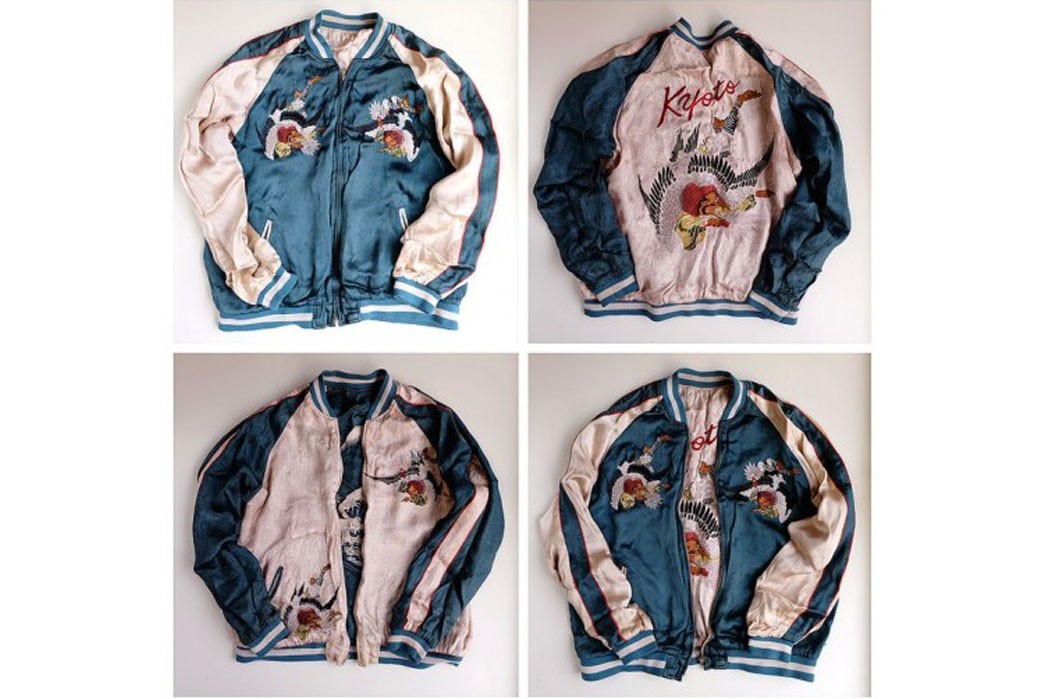
However, if there’s one style of satin jacket that I believe I could pull off, it’s the classic WWII Japanese Souvenir Jacket, the Sukajan. With its contrasting colors and elaborate embroidery of Eastern imagery, the sukajan holds its place as perhaps the only satin jacket that can be worn without a sense of irony. (Well, almost—more on that later.)
Like so many of our cherished heritage brand and workwear staples, we have the WWII era to thank for the sukajan’s popularity, notably American G.I.’s. As they prepared to leave Japan after occupation and reconstruction, many had traditional Japanese designs…dragons, maps, cherry blossoms, and geishas amongst the most popular…stitched onto existing jackets, and more popularly on the backs of jackets custom made from rayon and silk. The name Sukajan is an abbreviation of their original Japanese name, Yokusuka Jumper (the jackets were originally popularized by U.S. military personnel around the Yokosuka Air Force Base).
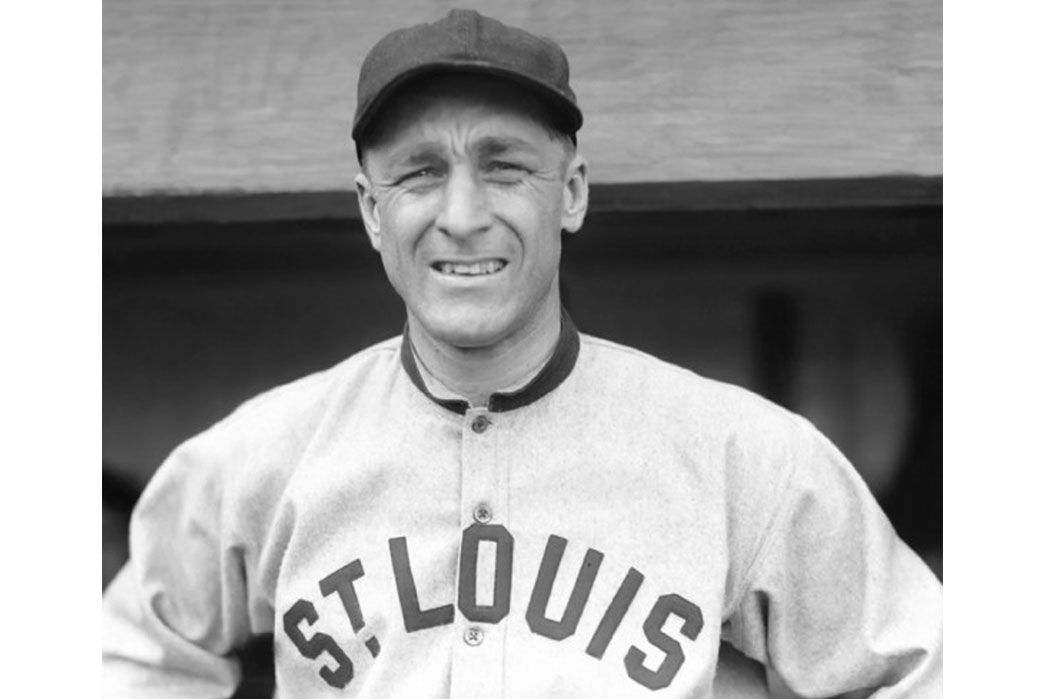
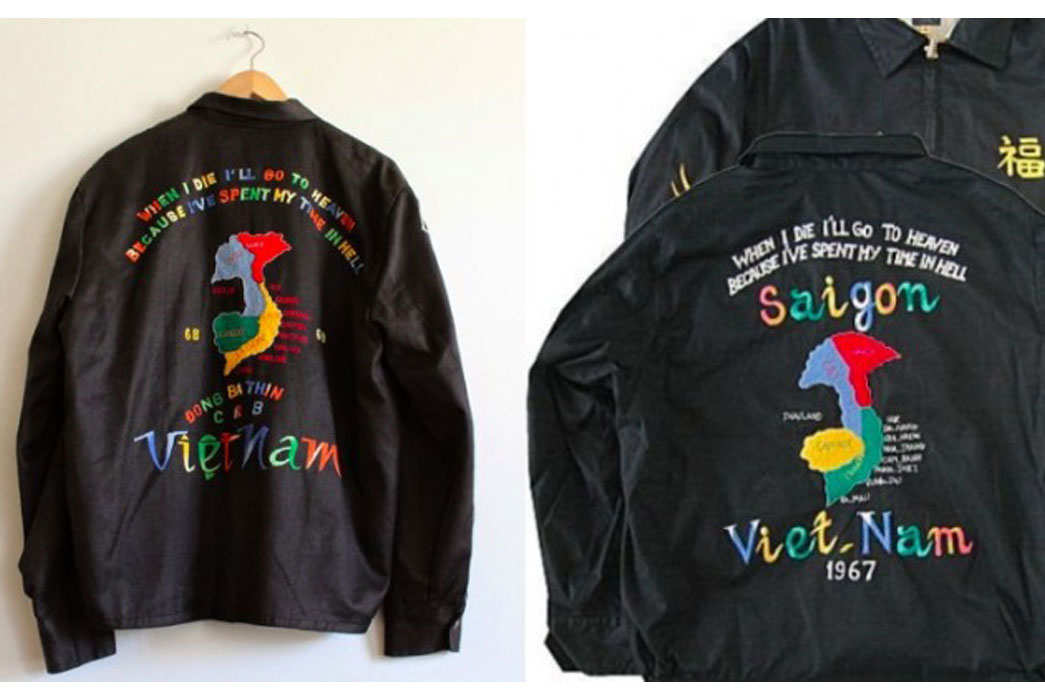
Given Japan’s love affair with baseball, it’s no surprise that the jackets were fashioned like early baseball jackets, lightweight “varsity” styles with the earliest versions from silk salvaged from parachutes. As the servicemen brought them back for themselves or as gifts for family and friends—souvenirs—they entered our sartorial consciousness and never left.
Sukajan style jackets made their way back from Korea and Vietnam as well, but it’s the examples from WWII that have had the most lasting impact, and not just stateside.
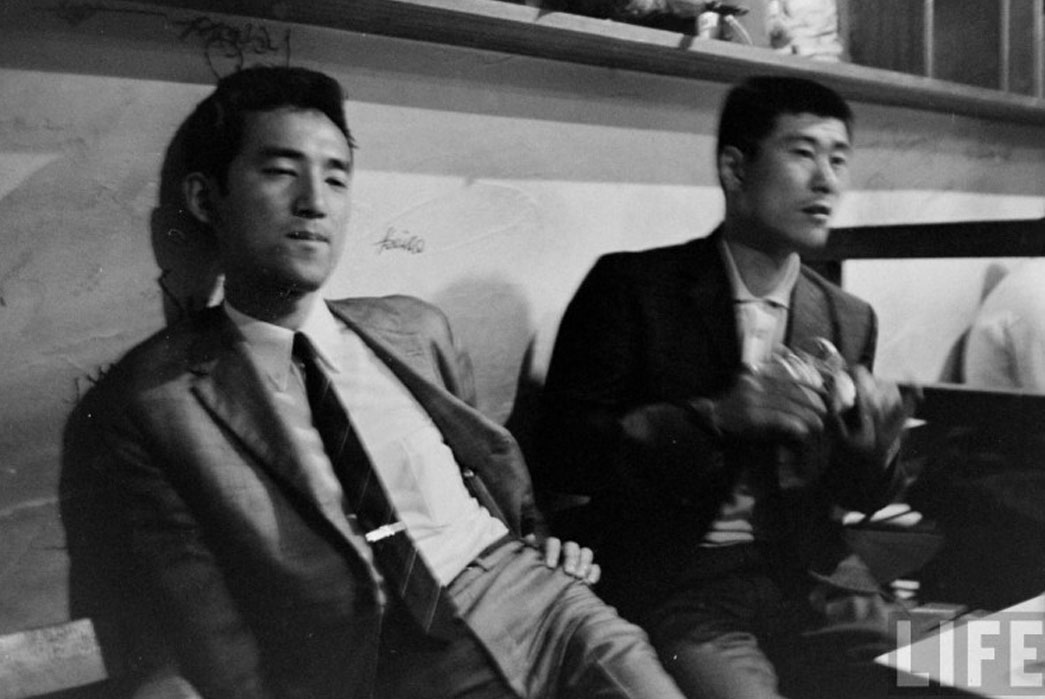
As a number of books chronicle (none better than W. David Marx’s, Ametora: How Japan Saved American Style) as a segment Japan’s youth of the early 1960’s embraced American Ivy style, others rallied against it, adopting the sukajan as their rebel-with-a-cause uniform.
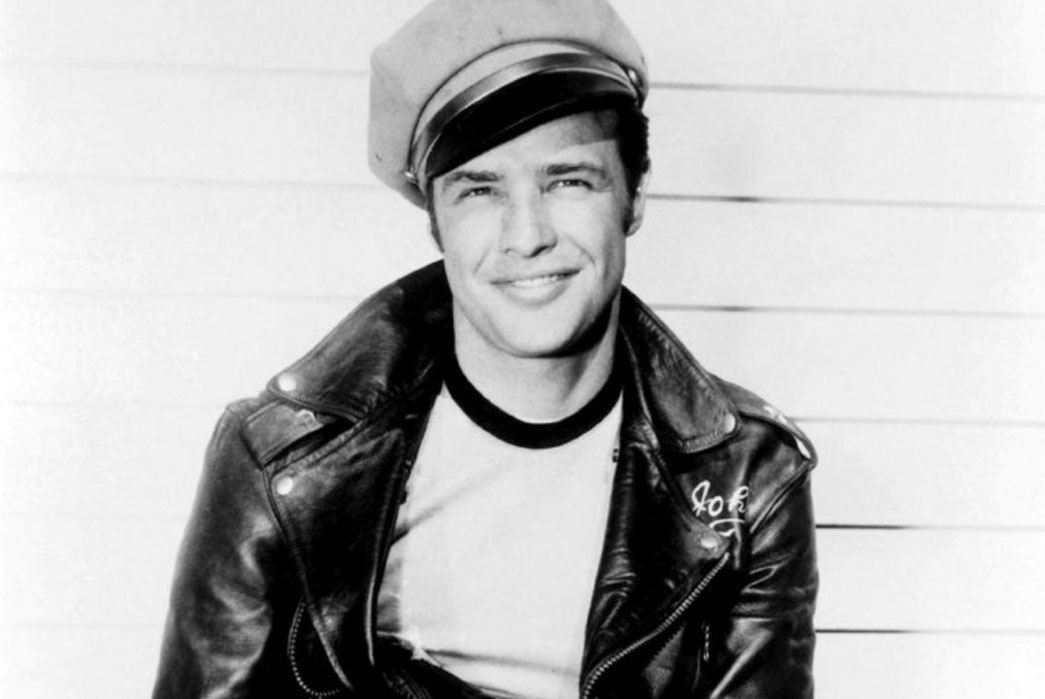
Like the Schott Perfecto leather jacket in the U.S. (as worn by Marlon Brando in The Wild One), the sukajan quickly became associated with Japanese gangs and “juvenile deliquents,” symbolism that endures and can be seen in contemporary hard-boiled Yakuza films.
Like so much of the good stuff (silk and rayon Hawaiian shirts, Woolrich coats, and quality denim of all makes), sukajan jackets were a thrift store staple from the 1950s through the 1970s. Today…not so much. Snapped up by collectors long ago, the original post-war sujakans have achieved mythic status, and like others who reside on the Mount Olympus of style (Big E Red Tab Levi’s, A-2 bomber jackets, army surplus khakis and field coats, you know, the stuff the Japanese now meticulously remake and sell back to us), perpetually inspire designers to reinvent, reinterpret, and just plain steal.
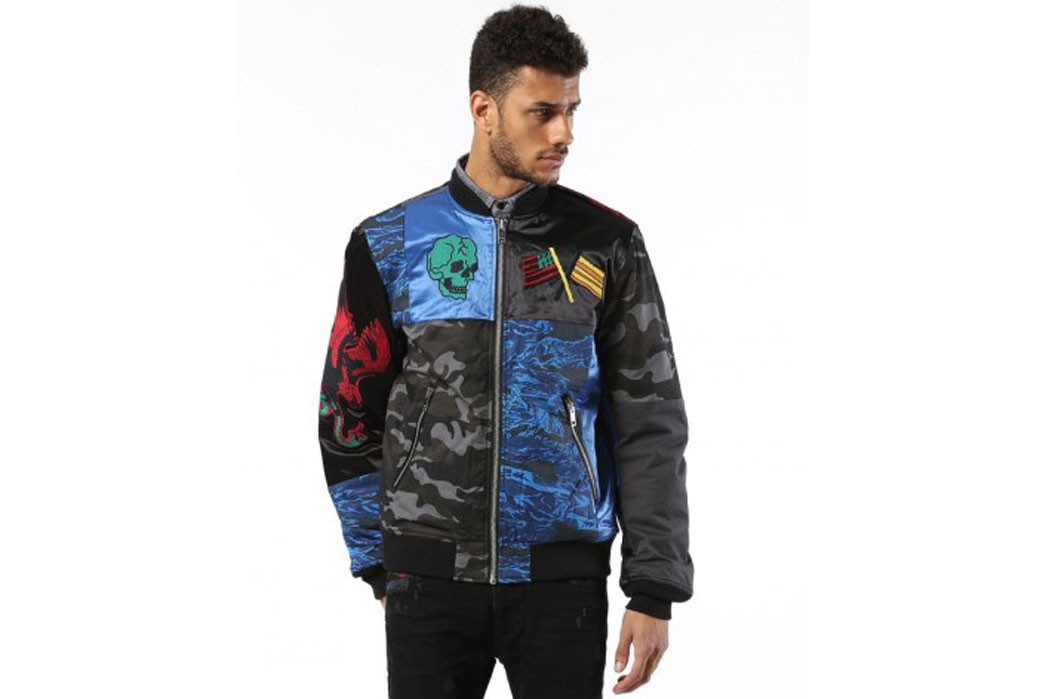
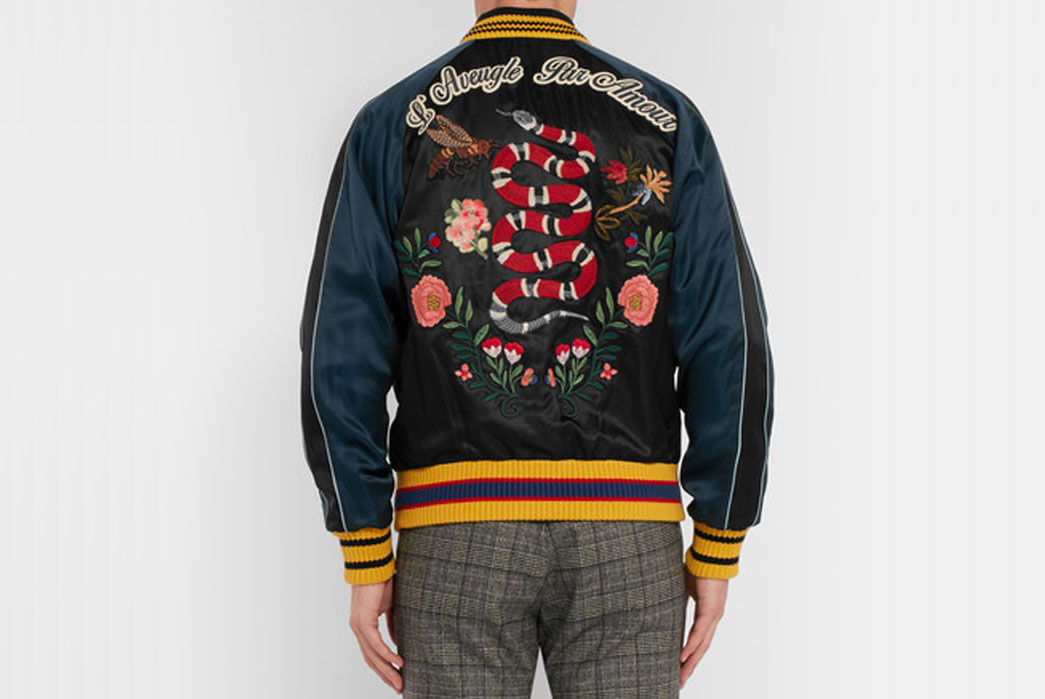
Starting just a couple of years ago, the sukajan could be seen on runways and in designer collections aimed at an audience who’d never set foot in a thrift store.
To illustrate just how mainstream the sujakan has now become…I was shopping on Venice’s oh-so-trendy Abbot Kiney Blvd. this past weekend, and I saw some rather drab (and it’s hard to conjure a drab iteration of a sujakan) take on the style…blah colors, clip-arty designs and overly simplistic embroidery. I asked the woman behind the counter how they were selling, and she said they could barely keep them in stock!
At the risk of overgeneralizing, the crowd selling and buying these jackets may indeed be doing so at worst ironically, and at best cluelessly, with little knowledge of the storied past embedded in the DNA of this season’s mass market streetwear. That’s OK. But I do want one, and even if I had the scratch, I’d never be able to find and fit into a vintage sujukan (apparently, there were few lanky 6’3 servicemen with a love for colorful Japanese satin), there are faithful reproductions that ooze authenticity and style.
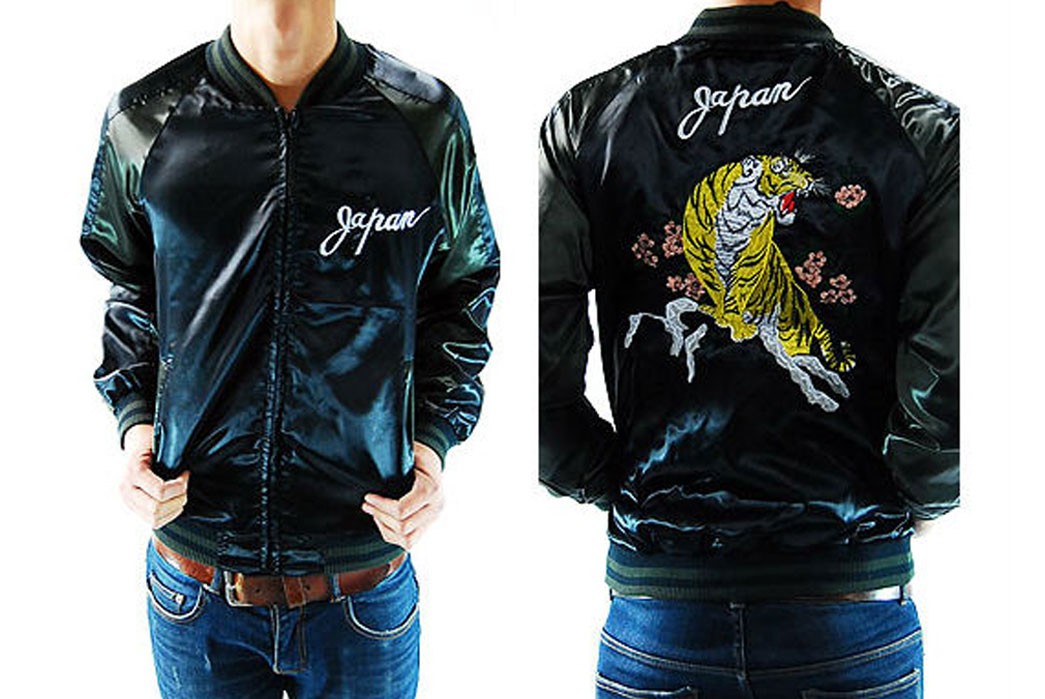
My favorites are the styles available from Japan Zone (natch), a steal at under $80. They may not be made from old parachutes, but they retain the spirit of their ancestors’ soulful satin, if there ever was such a thing. I just hope Gosling doesn’t read this—the last thing I need is him biting my style…
Other options include offerings from:
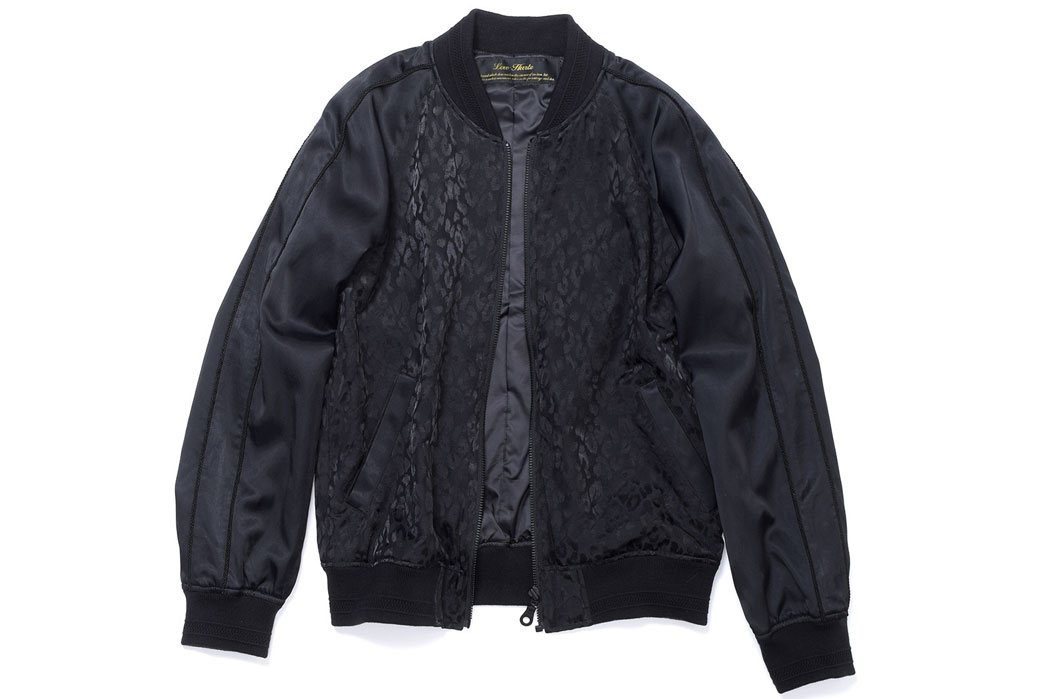
Low Hurtz for $465 at Blue in Green.
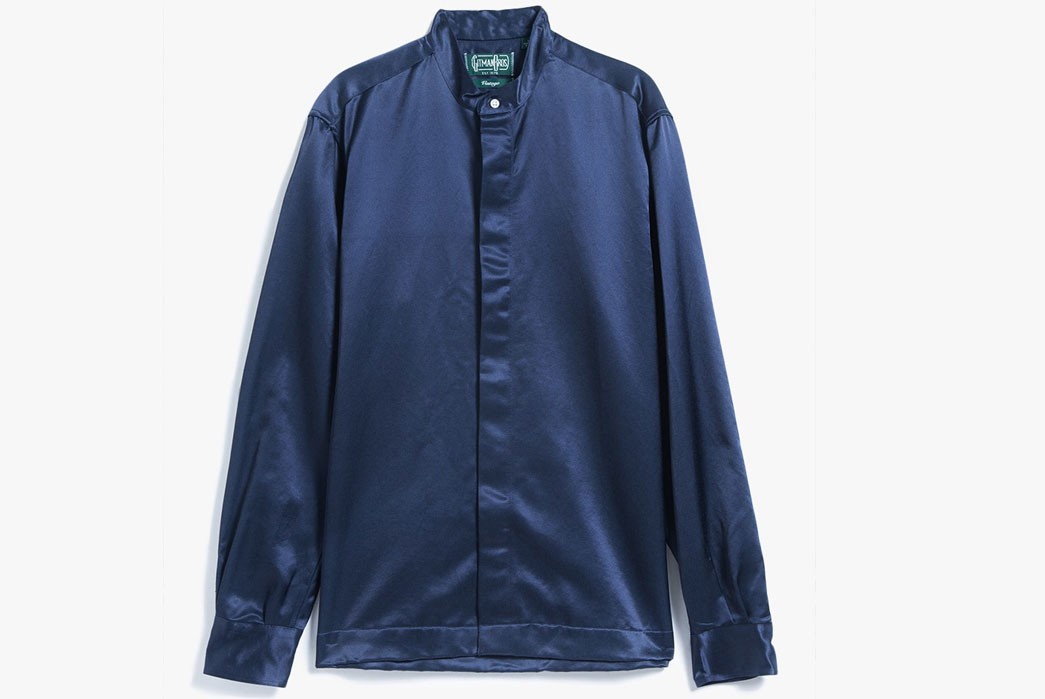
Gitman Bros. Vintage’s take on a sukajan shirt for $220 at Need Supply.
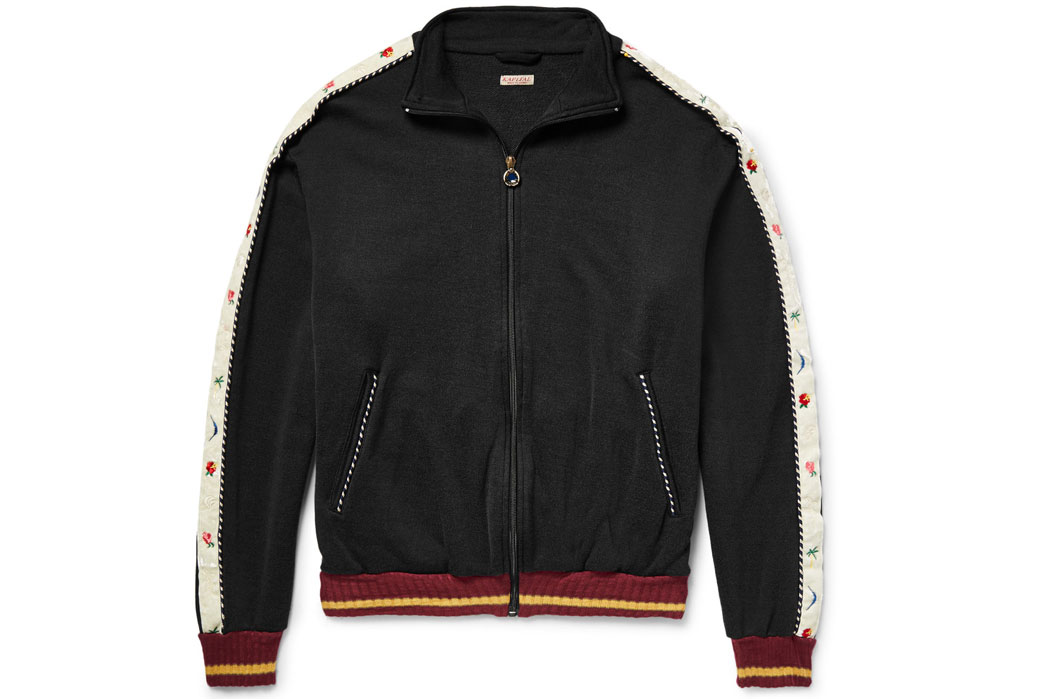
Kapital for $400 at Mr. Porter.
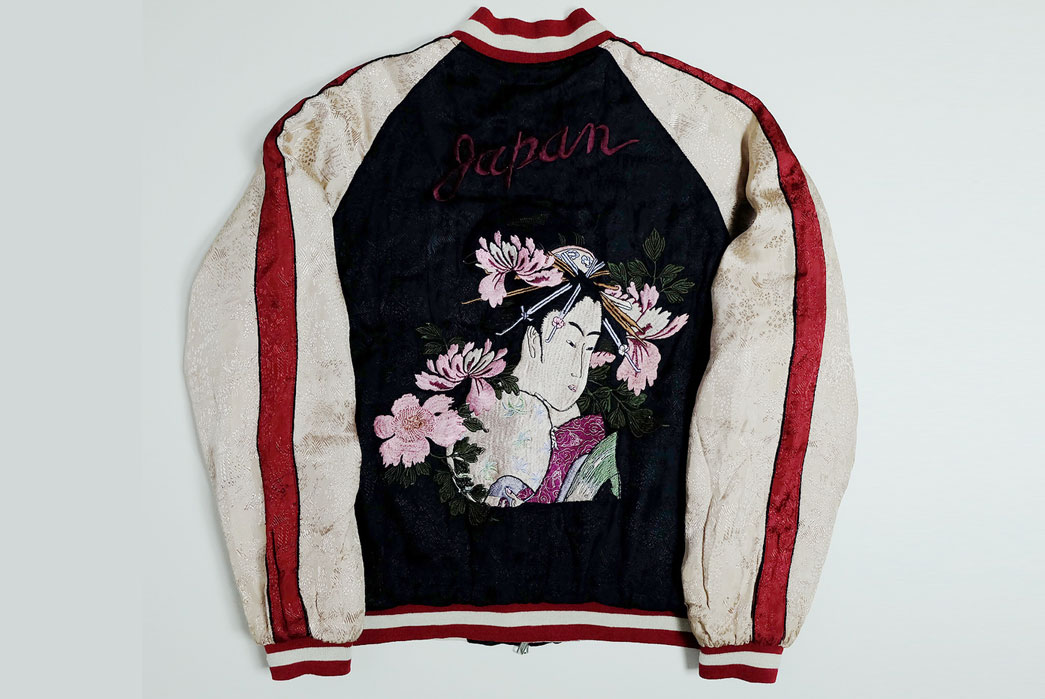
Or if you’d like to go the vintage route, there are plenty available like the above at Japan Lover Me and on eBay.

